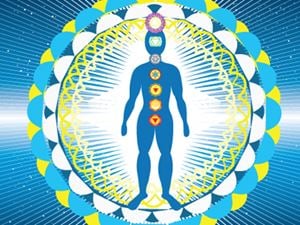
Kundalini is a term that comes from the Hindu tradition and refers to a mysterious but dormant power within us that – once awakened – will facilitate higher spiritual states and even enlightenment. Buddhists, especially Tibetan Buddhists, most definitely work with kundalini, too. In Tibetan Buddhism, this practice of awakening is called tummo or ‘inner fire’ and it is often simplistically described as a method to warm one’s body in the icy Tibetan mountains. But tummo is much more than cheap heating! According to the famous Six Yogas of Naropa, it is the foundation of all higher spiritual realizations and can bring us unimaginable states of bliss, profound wisdom and the amazing power to achieve anything we set our mind on.
Since the publication of Gopi Krishna’s book Kundalini, many people have come forward with reports of so-called ‘spontaneous kundalini awakenings’ – often accompanied by painful and even disastrous physical, mental and emotional symptoms.
All teachers of kundalini or tummo practices agree that a student should be well prepared to cope with the onslaught of the powerful energy of the kundalini. It intensifies all our (negative) emotions and it also opens the floodgates to our unconscious mind - confronting us with all our unresolved issues, as well as a host of antisocial or megalomaniac ideas that we never thought we had. For an unprepared mind this can be highly confusing and damaging – just like a small light bulb will burn out if you put too much electrical energy through it.
How does Buddhist practice prepare us for a safe kundalini awakening? First of all, Buddhist students are taught not to take themselves and their various thoughts and emotions all too seriously. Instead of identifying with our thoughts and emotions, we need to learn to observe them just like we would look at interesting animals in a zoo. They may seem ferocious or dangerous but they cannot harm us if we have learnt to see them as transient and insubstantial.
If we are confronted, for example, with inappropriate sexual urges when the kundalini awakens our lower energy centres, we can laugh at these urges instead of getting upset about them, let alone feeling the need to act on them. Or if we experience more powerful negative emotions than we are used to, we are able to simply let these emotions dissipate instead of getting confused as to why we are feeling this way.
The second most important security measure for a safe kundalini awakening is a firm focus on altruistic love. If we learn to become aware of our hidden forms of selfishness and instead combine all our desires with altruistic love, then the power of the kundalini will reinforce this motivation and help us to do more good than ever before.
With these two safety measures in place and under the watchful eye of a caring and experienced spiritual teacher, kundalini is the fastest road to enlightenment.
Tara Springett M.A. is a fully qualified Buddhist teacher and therapist and the author of several self-help books. Tara has gone through the kundalini process herself and is an experienced guide to help people who are suffering from kundalini symptoms. To find out more visit www.taraspringett.com

